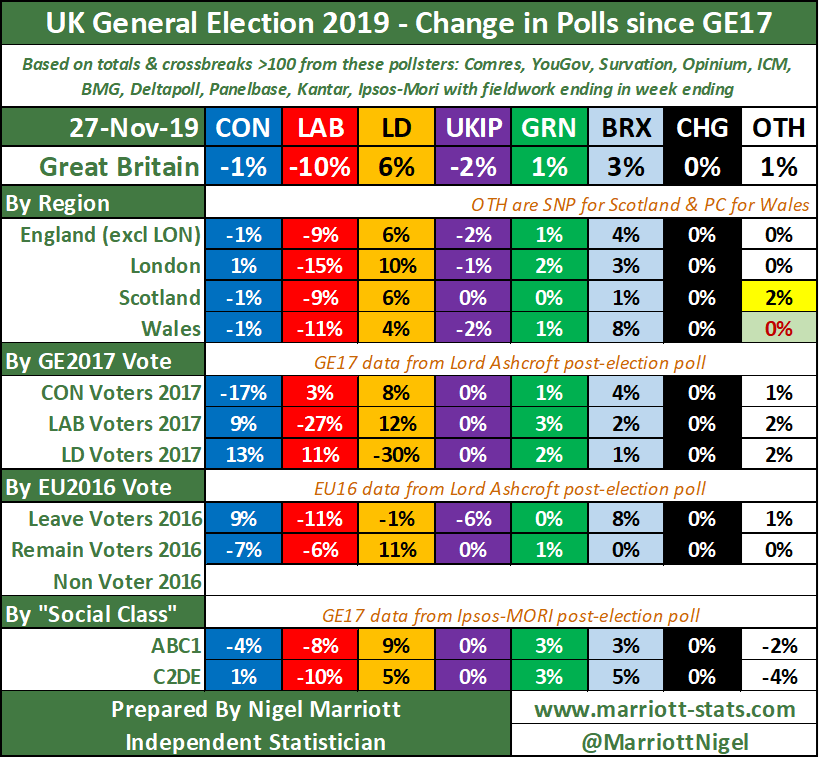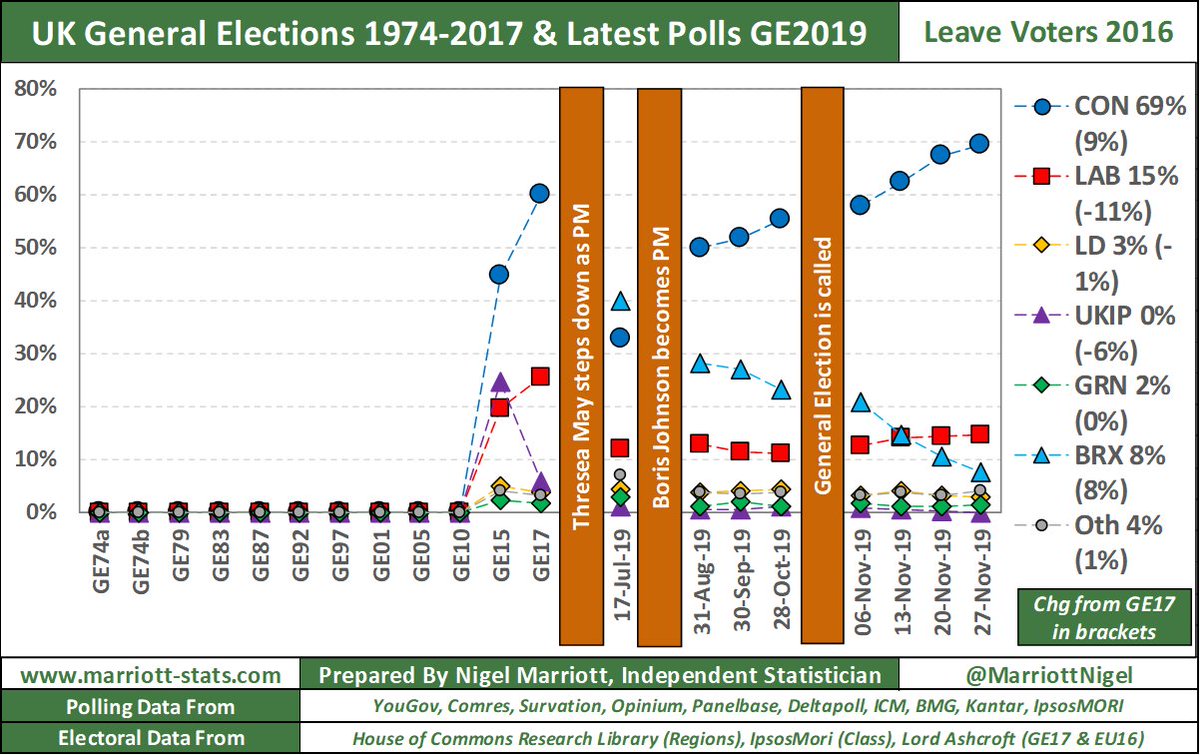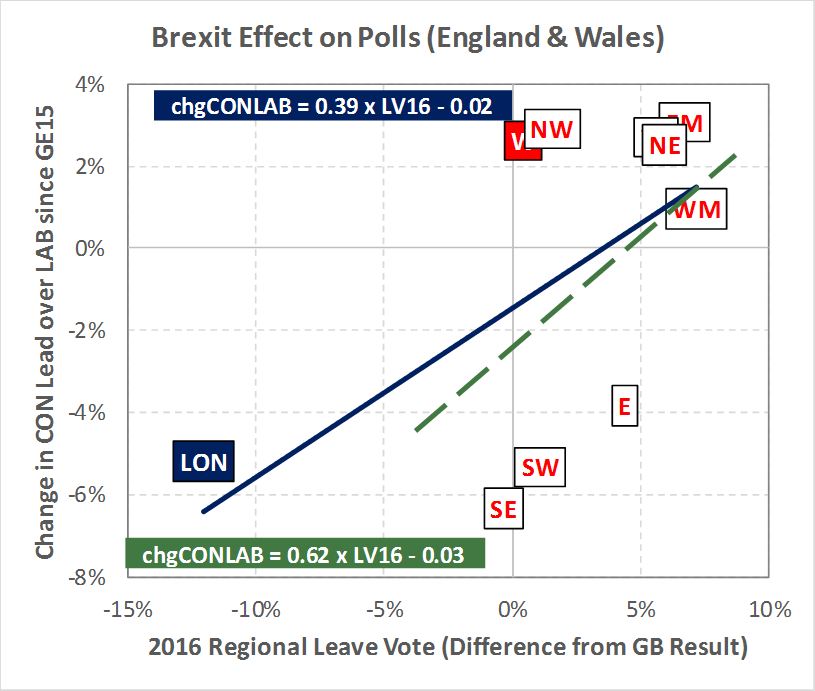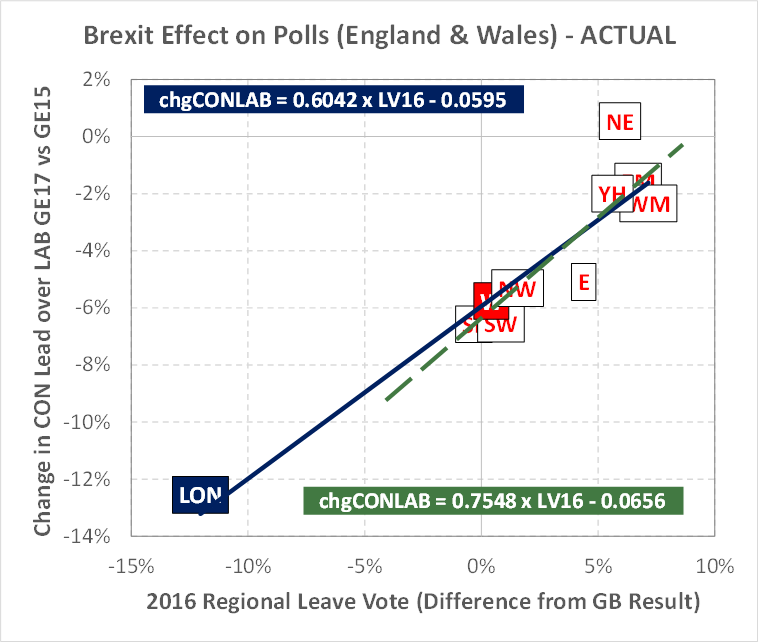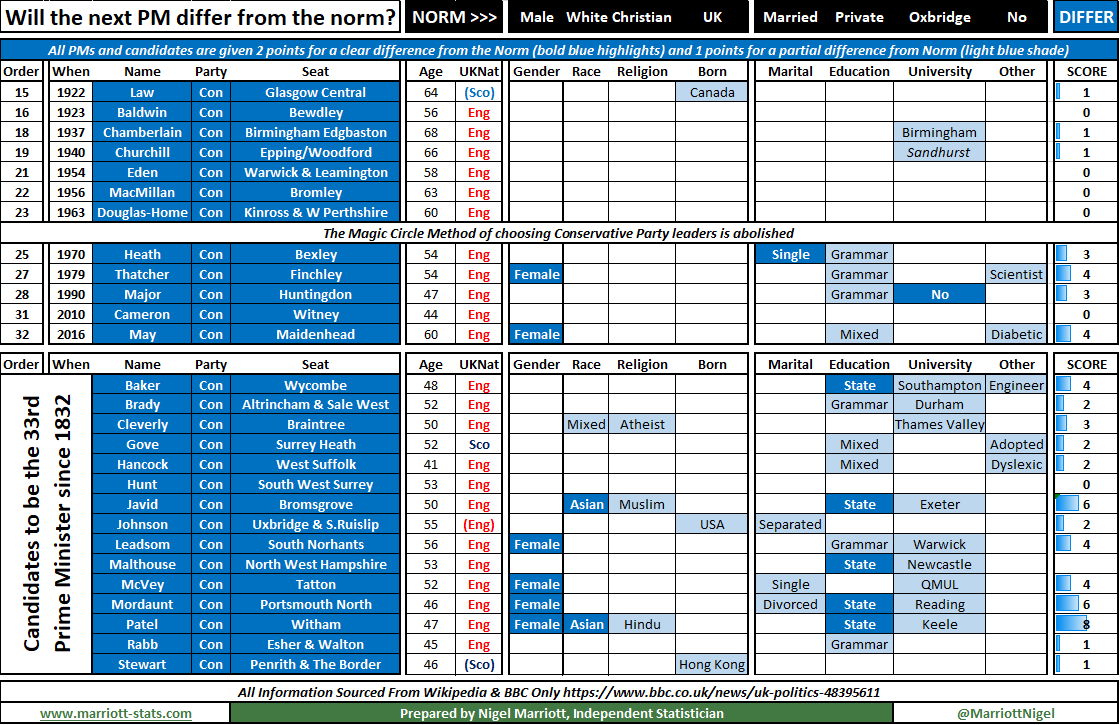
Parliament votes tomorrow to confirm that England will go into its 2nd #COVID19 lockdown from Thursday. Does the data show that it's necessary?
We know that deaths are rising and at present are on trend to overtake the April peak around the 3rd/4th week of November.
But ...1/n
We know that deaths are rising and at present are on trend to overtake the April peak around the 3rd/4th week of November.
But ...1/n
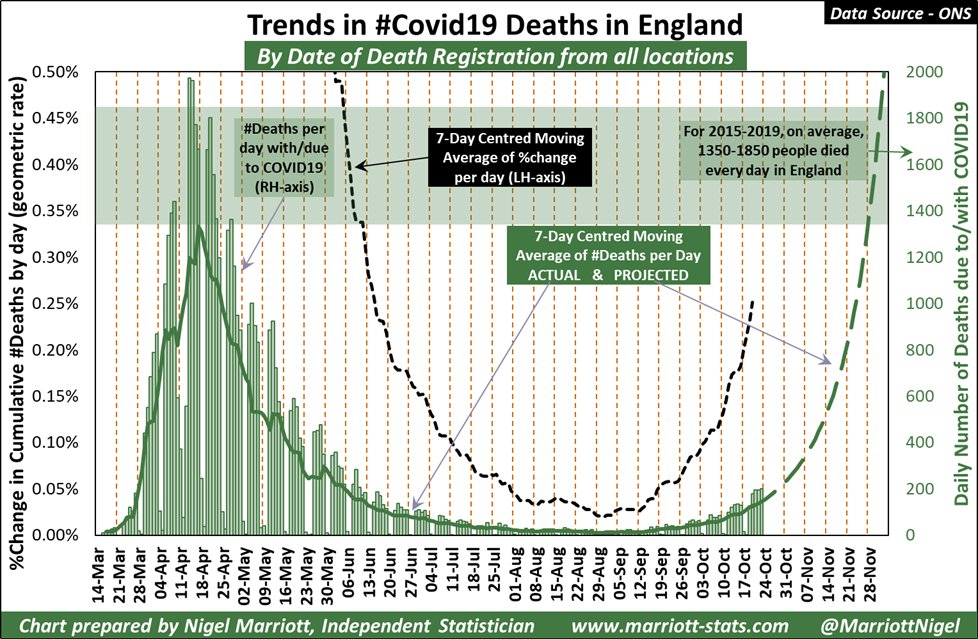
... if cases are already in decline by now, then what will a 2nd lockdown do to help reduce deaths?
At best all it can do is accelerate an existing decline or at worse prevent cases from increasing again.
So are cases about to turn? Nationally, the picture is poised. /2
At best all it can do is accelerate an existing decline or at worse prevent cases from increasing again.
So are cases about to turn? Nationally, the picture is poised. /2
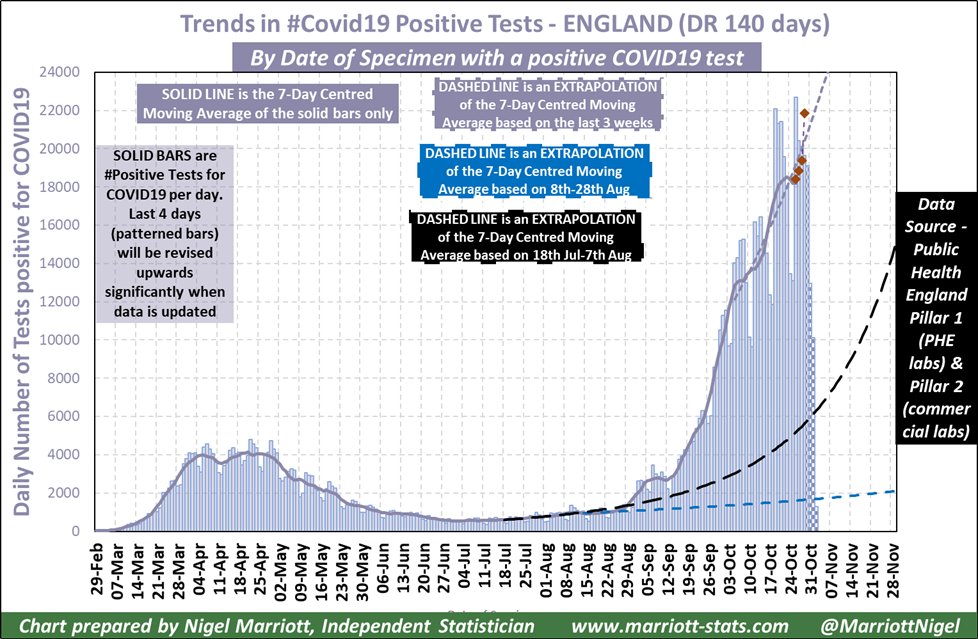
The 7 day centred moving average has turned but potential revisions to the last 7 days could reverse this (red triangles are a short CMA projection based on previous restatements).
The thing to note though is that the latest 7 day CMA is as of 26th October, 1 week ago.
... /3
The thing to note though is that the latest 7 day CMA is as of 26th October, 1 week ago.
... /3
Thus in a week's time, it may be clearly obvious that a turning was reached before the government announced a 2nd lockdown in which case there may be a clamour to lift it early.
It's worth remembering that the timing of the 2nd wave varied across the country so let's look .../4
It's worth remembering that the timing of the 2nd wave varied across the country so let's look .../4
... at the trends in the places at the front of the 1st wave.
Merseyside and Tyne & Wear were among the first places hit and were among the first to be affected when the 3 tier system was introduced at the beginning of October. One has to say that this worked here.
/5

Merseyside and Tyne & Wear were among the first places hit and were among the first to be affected when the 3 tier system was introduced at the beginning of October. One has to say that this worked here.
/5
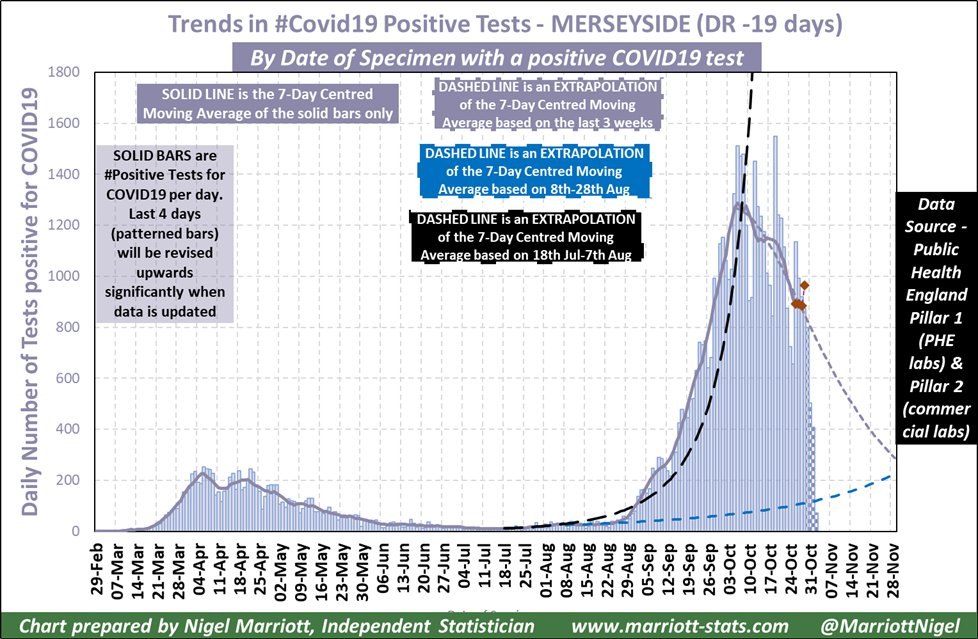
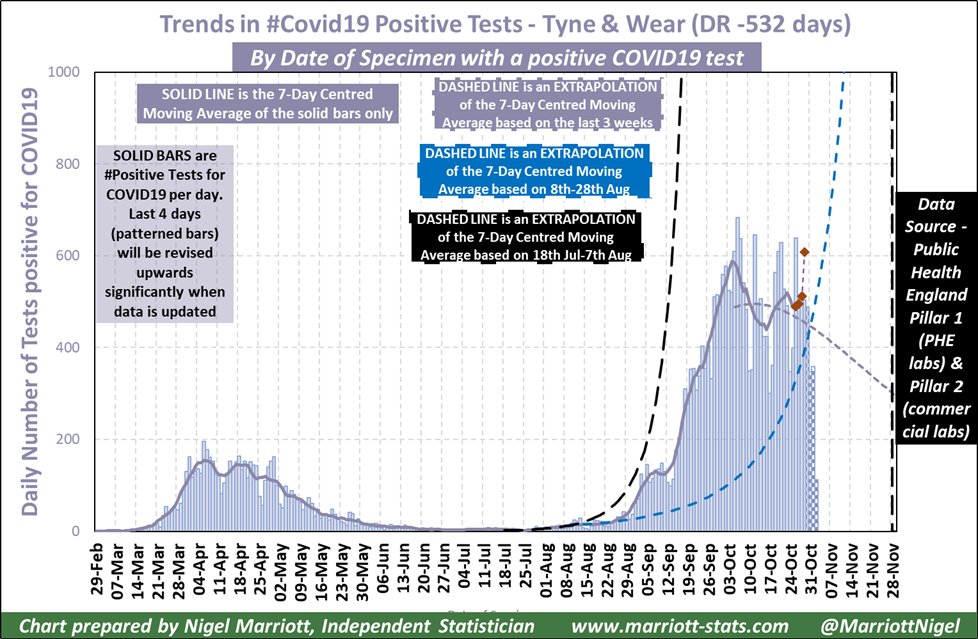
However Gt Manchester and Leeds & W.Yorks have not been as successful. Both look like they are about to turn but it will be next week before we can be sure.
/6

/6
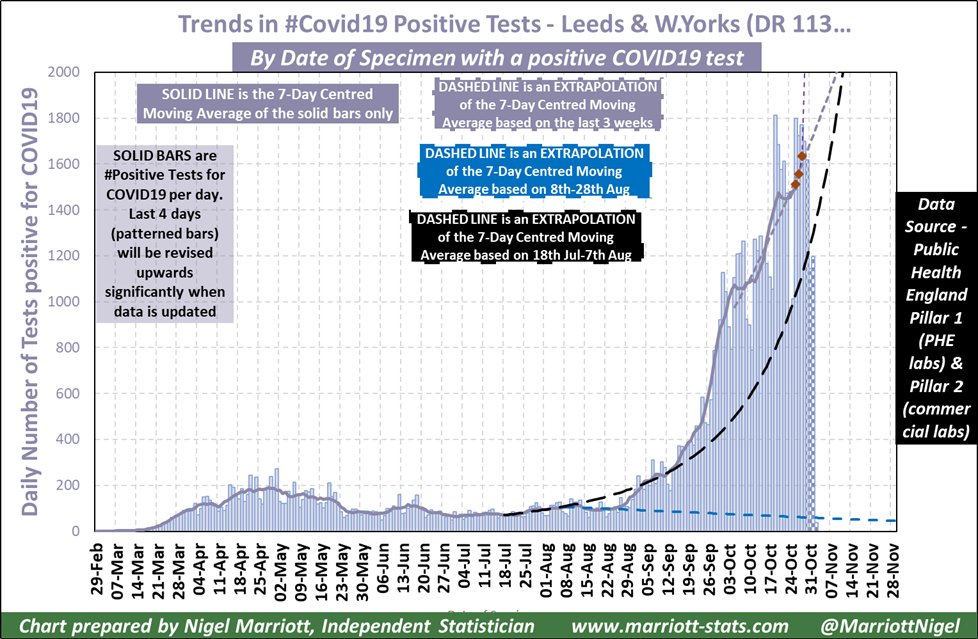

Moving south, the West Midlands (Birmingham & Coventry, etc) and West England (Bristol & Bath area) are still on the upward trend. Given they started later, it's reasonable to expect that it will be another 2 weeks before we are sure they have turned.
But here's the thing. /7

But here's the thing. /7


How will we know if the 2nd lockdown had a bigger effect on these areas than simply continuing with the current regional 3-tier system? The answer is we won't unless the effect is very large (which can be detected in the bending of the trend).
My point is that the cases .../8

My point is that the cases .../8
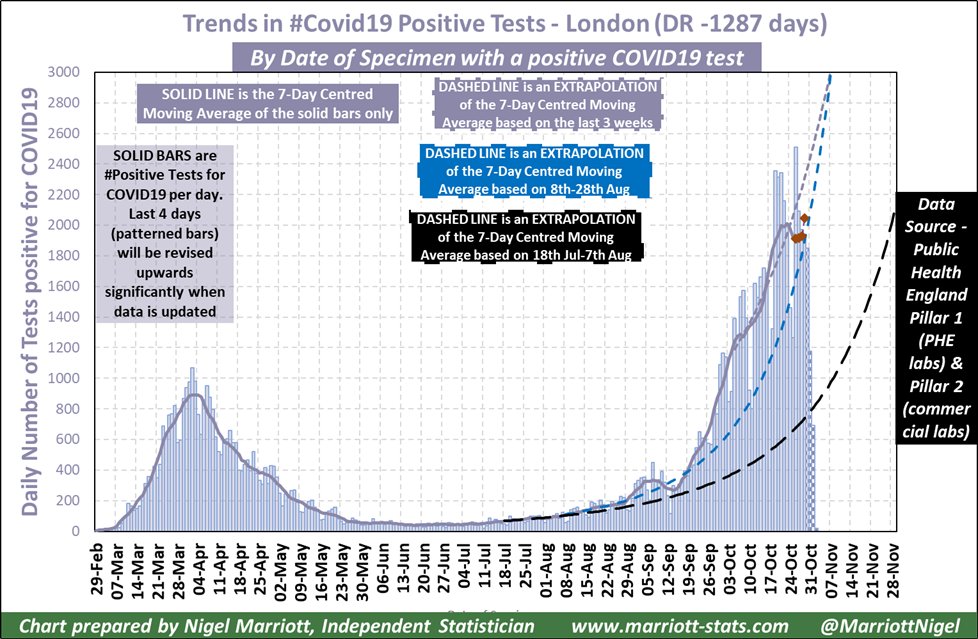

... we have now are already baked in in terms of hospitalisations and deaths to come in November. A 2nd lockdown now is about reducing the stress on the NHS in December but if cases are turning now and the effect of a 2nd lockdown does little to accelerate the downturn ...
/9

/9
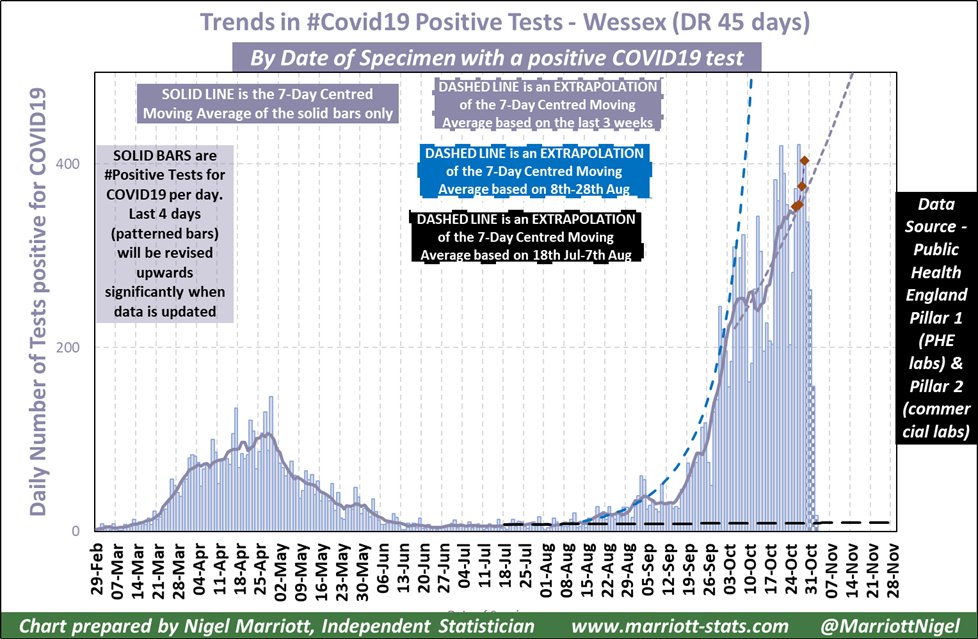
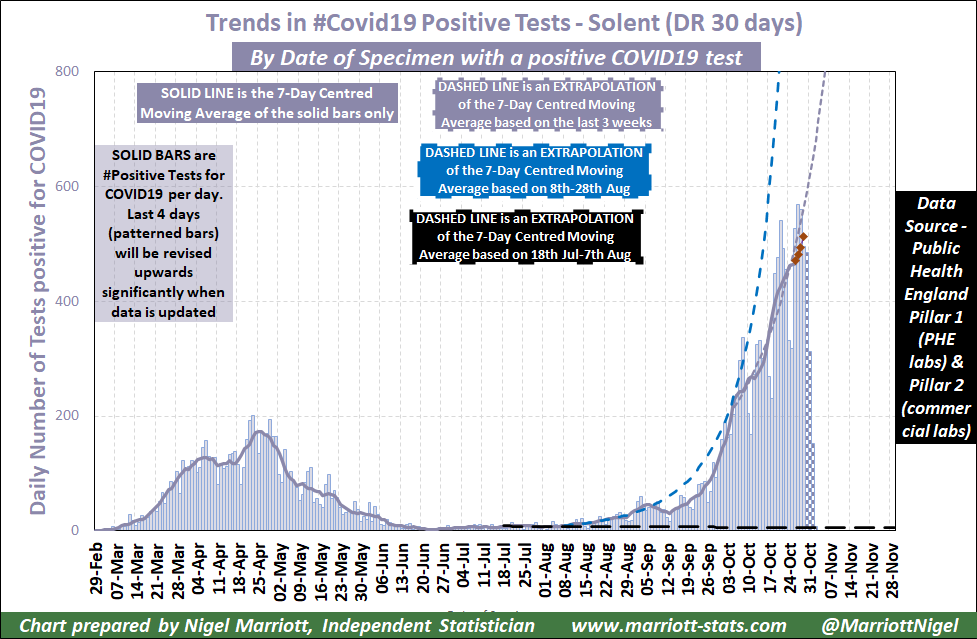
... it won't change what would have happened.
I have to say I feel that continuing with the regional tier system and moving a number of southern areas up into T2 or T3 would have the same effect as putting the whole country into lockdown again.
Am I missing something?
/10

I have to say I feel that continuing with the regional tier system and moving a number of southern areas up into T2 or T3 would have the same effect as putting the whole country into lockdown again.
Am I missing something?
/10
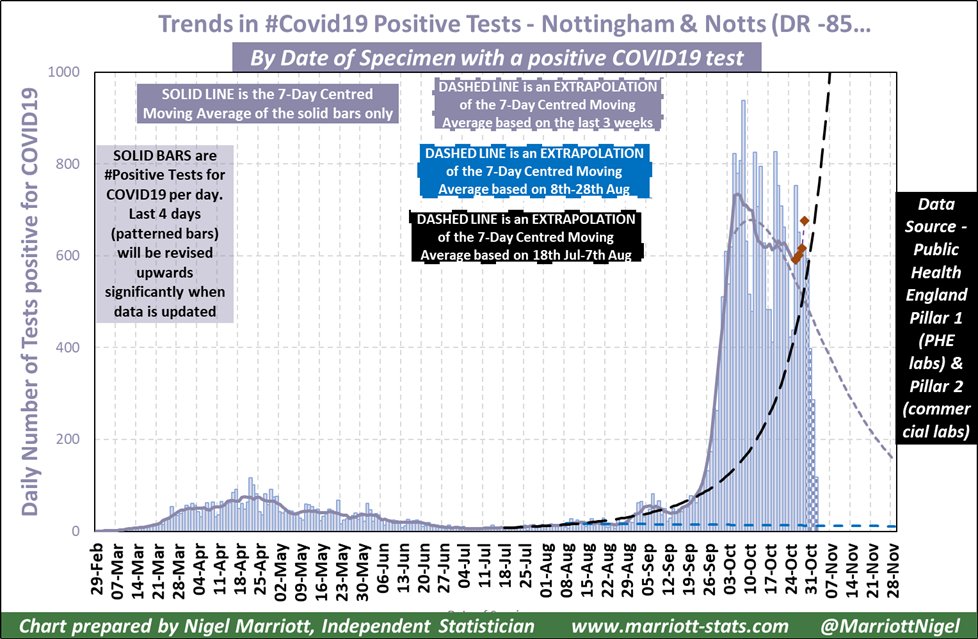
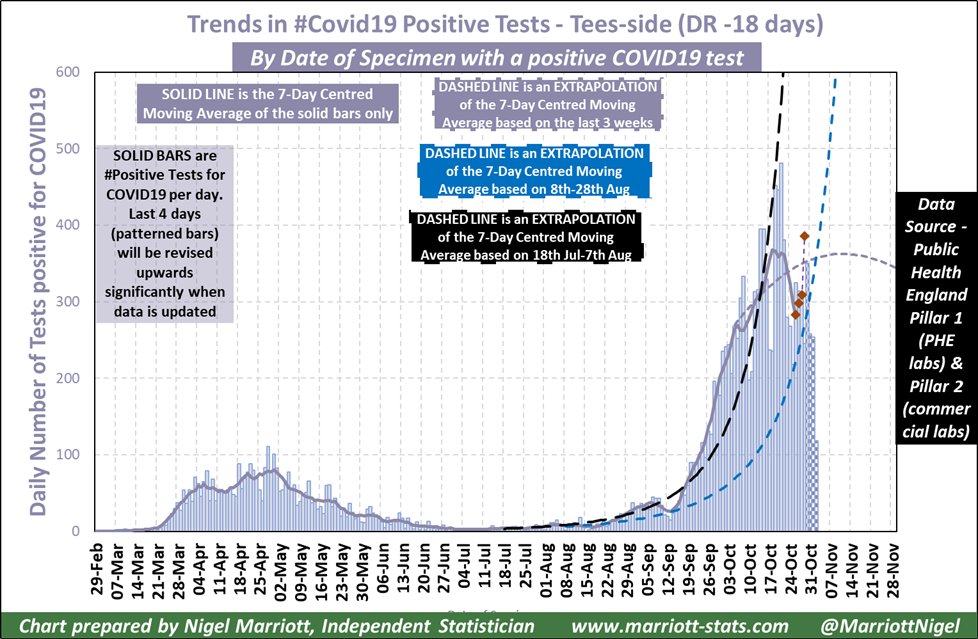
One thing I can think of is that PHE are about to mess up the data again and we will get another rude shock like we did back at the end of September. I don't have a lot of faith in their data management so I don't rule it out.
But could there be something else?
/end
But could there be something else?
/end
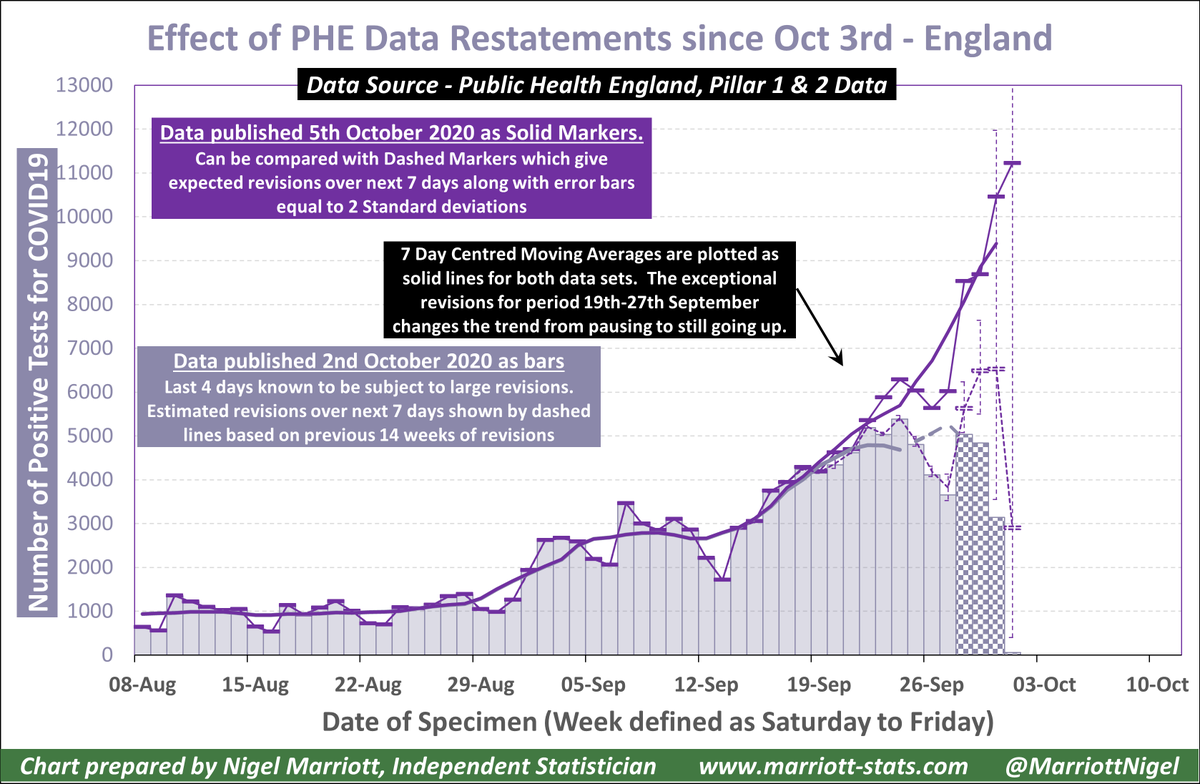
• • •
Missing some Tweet in this thread? You can try to
force a refresh




